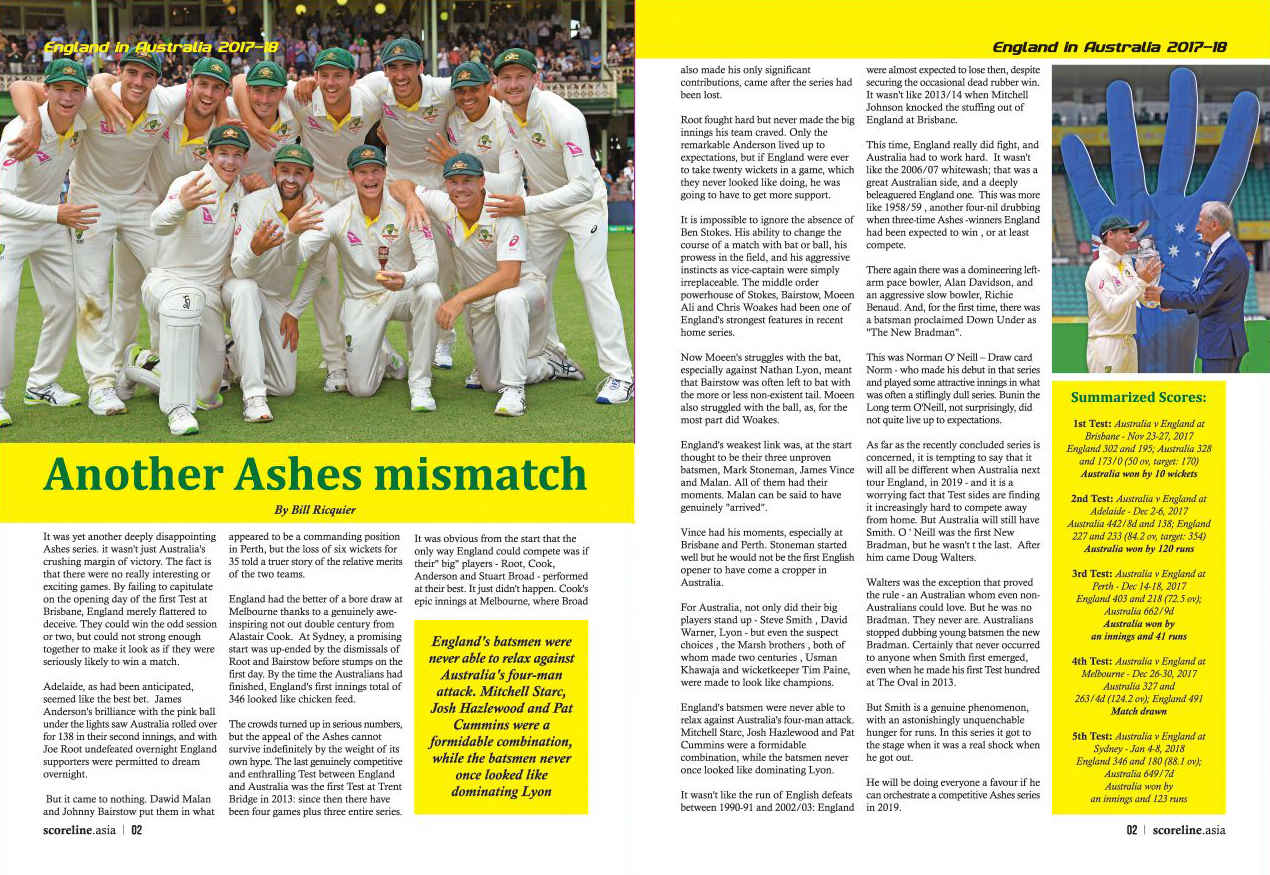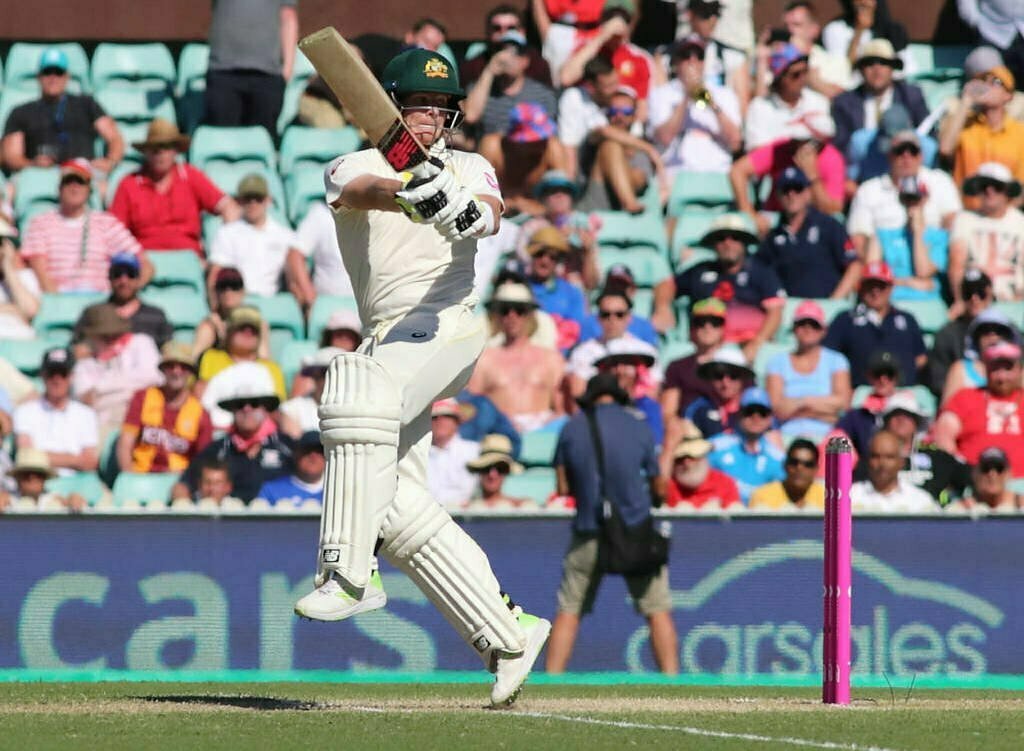It was yet another deeply disappointing Ashes series. It wasn’t just Australia’s crushing margin of victory. The fact is that there were no really interesting or exciting games. By failing to capitulate on the opening day of the first Test at Brisbane, England merely flattered to deceive. They could win the odd session or two, but could not string enough together to make it look as if they were seriously likely to win a match.
Adelaide, as had been anticipated, seemed like the best bet. Janes Anderson’s brilliance with the pink ball under the lights saw Australia rolled over for 138 in their second innings, and with Joe Root undefeated overnight England supporters were permitted to dream. But it came to nothing. Dawid Malan and Johnny Bairstow put them in what appeared to be a commanding position in Perth, but the loss of six wickets for 35 told a truer story of the relative merits of the two teams. England had the better of a bore draw at Melbourne thanks to a genuinely awe-inspiring not out double century from Alastair Cook. At Sydney, a promising start was up-ended by the dismissals of Root and Bairstow before stumps on the first day. By the time the Australians had finished, England’s first innings total of 346 looked like chicken feed.
The crowds turned up in serious numbers, but the appeal of the Ashes cannot survive indefinitely by the weight of its own hype. The last genuinely competitive and enthralling Test between England and Australia was the first Test at Trent Bridge in 2013: since then there have been four games plus three entire series.
It was obvious from the start that the only way England could compete was if their “big” players – Root, Cook, Anderson and Stuart Broad – performed at their best. It just didn’t happen. Cook’s epic innings at Melbourne, where Broad also made his only significant contributions, came after the series had been lost. Root fought hard but never made the big innings his team craved. Only the remarkable Anderson lived up to expectations, but if England were ever to take twenty wickets in a game, which they never looked like doing, he was going to have to get more support.
It is impossible to ignore the absence of Ben Stokes. His ability to change the course of a match with bat or ball, his prowess in the field, and his aggressive instincts as vice-captain, were simply irreplaceable. The middle order powerhouse of Stokes, Bairstow, Moeen Ali and Chris Woakes had been one of England’s strongest features in recent home series. Now Moeen’s struggles with the bat, especially against Nathan Lyon, meant that Bairstow was often left to bat with the more or less non-existent tail. Moeen also struggled with the ball, as, for the most part did Woakes.
England’s weakest link was, at the start thought to be their three unproven batsmen, Mark Stoneman, James Vince and Malan. All of them had their moments. Malan can be said to have genuinely “arrived”. Vince shone occasionally, especially at Brisbane and Perth. Stoneman started well but he would not be the first English opener to have come a cropper in Australia.
For Australia, not only did their big players stand up – Steve Smith, David Warner, Lyon – but even the suspect choices, the Marsh brothers, both of whom made two centuries, Usman Khawajah and wicketkeeper Tim Paine, were made to look like champions. England’s batsmen were never able to relax against Australia’s four-man attack. Mitchell Starc, Josh Hazlewood and Pat Cummins were a formidable combination, while the batsmen never once looked like dominating Lyon.
It wasn’t like the run of English defeats between 1990-91 and 2002/03: England were almost expected to lose then, despite securing the occasional dead rubber win. It wasn’t like 2013/14 when Mitchell Johnson knocked the stuffing out of England at Brisbane. This time, England really did fight, and Australia had to work hard. It wasn’t like the 2006/07 whitewash; that was a great Australian side, and a deeply beleaguered England one. This was more like 1958/59, another four-nil drubbing when three-time Ashes -winners England had been expected to win, or at least compete. There again there was a domineering left-arm pace bowler, Alan Davidson, and an aggressive slow bowler, Richie Benaud. And, for the first time, there was a batsman proclaimed Down Under as “The New Bradman”. This was Norman O’Neill – Drawcard Norm – who made his debut in that series and played some attractive innings in what was often a stiflingly dull series. But in the long-term O’Neill, not surprisingly, did not quite live up to expectations.
As far as the recently concluded series is concerned, it is tempting to say that it will all be different when Australia next tour England, in 2019 – and it is a worrying fact that Test sides are finding it increasingly hard to compete away from home. But Australia will still have Smith. O’Neill was the first New Bradman, but he wasn’t the last. After him came Doug Walters. Walters was the exception that proved the rule – an Australian whom even non-Australians could love. But he was no Bradman. They never are. Australians stopped dubbing young batsmen the new Bradman. Certainly that never occurred to anyone when Smith first emerged, even when he made his first Test hundred at The Oval in 2013. But Smith is a genuine phenomenon, with an astonishingly unquenchable hunger for runs. In this series it got to the stage when it was a real shock when he got out.
He will be doing everyone a favour if he can orchestrate a competitive Ashes series in 2019.
Photo: Steve Smith batting in the 5th Test of the 2017/18 Ashes Series in Australia. By David Malloy
This article also appeared in scoreline.asia:

Share this Post
